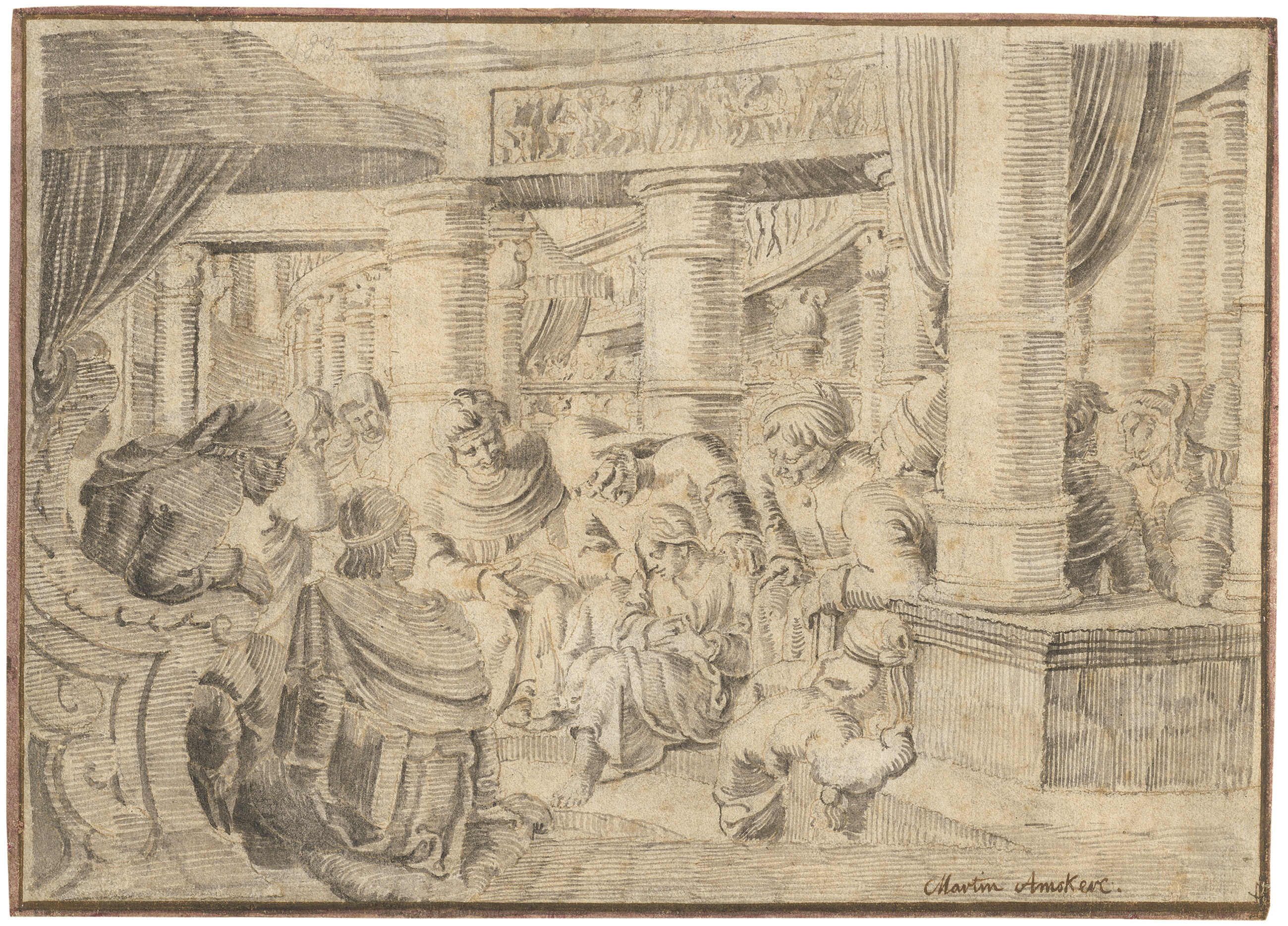Loading the page ...
Master of 1527
(possibly Aertgen Claesz. van Leyden, 1498–1564, Leiden)
Christ among the Scribes. Pen and grey-brown ink, framing line in pen and brown ink with reddish-brown watercolour border. 19 x 27 cm. “Martin Amskerc” inscribed in an old hand in the lower margin. Watermark: Little coat of arms.
As early as 1928 Paul Wescher distinguished two different hands among the numerous Dutch draughtsmen active in the 16th century as successors to Lucas van Leyden. He gave one of these anonymous artists the notname Master of 1527 based on the year present on one of his drawings. He attributed a second group of works to the so-called Master of the Miracles of the Apostles (see P. Wescher, “Holländische Zeichner zur Zeit des Lucas van Leiden”, Oud Holland, 45, 1928, pp. 245–254). Further research results were presented in 1939, when I. Q. van Regteren Altena associated the groups of works identified by Wescher with a large number of drawings and paintings of the Leiden School and put these works together to form a complete oeuvre which he attributed to Aertgen Claesz. van Leyden (“Aertgen van Leyden”, Oud Holland, 56, 1939, pp. 17–25, 74–86, 129–138, 222–235). The thesis advanced by van Regteren Altena and later by J. Bruyn now appears questionable, however, in view of the stylistic heterogeneity and diversity of the individual works in what is called the Aertgen Group. On the contrary, it can be assumed that a larger number of anonymous artistic figures were involved who worked in a very expressive and idiosyncratic mannerist idiom.
The present drawing entitled Christ among the Scribes, which was hitherto unknown to researchers, is stylistically very close to the already known drawings of the Master of 1527 and is thus of considerable art historical relevance. Typical of this artist is his very original and striking penwork, which came to be his hallmark. The Master of 1527 uses a consistent system of parallel hatchings in pen and ink over a light preliminary drawing in graphite and for the most part dispenses with contour lines. The outcome is a highly idiosyncratic, nervously shimmering graphical effect. The figures are squat and puppet-like with expressive and often distorted facial features, as if they were wearing masks. It seems almost as if the artist deliberately employed these mannerisms in order to achieve the maximum expressiveness and visual succinctness.
Most of the drawings by the Master of 1527 are New Testament scenes. The present work can thus easily be compared with the Adoration of the Shepherds from the year 1527 (formerly Kneppelhout Collection, Amsterdam, present whereabouts unknown) and with the drawing from the same year entitled Christ Blesses the Children (Paris, Musée du Louvre). Hence it is not illogical to assume that the individual drawings originally formed part of a series featuring episodes from the life of Christ.
Contact us for further information